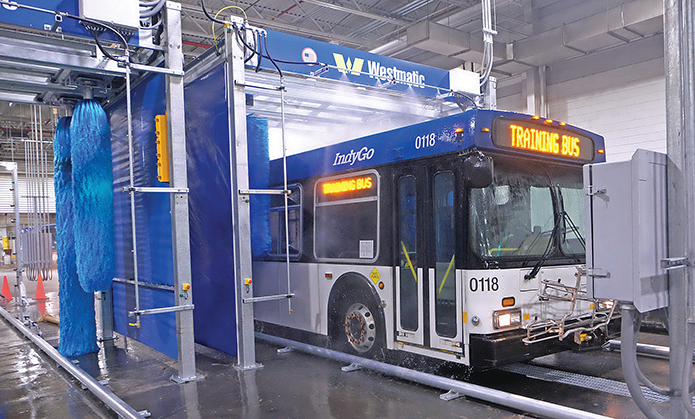
Westmatic’s bus wash systems are designed with effectiveness and efficiency being paramount. Our systems are robust and reliable, and most transit authorities opt for either our Transit Master 4 brush drive through system or Viking 3 brush gantry system. Brush systems are more effective than strictly touchless systems and both styles of wash systems are extremely versatile, which allow for vehicle specific wash programs to be selected to maximize wash performance and capabilities. Most transit authorities operate a variety of vehicle types from different manufacturers, so a versatile and safe wash is a must. Westmatic’s systems integrate the latest technology and highest quality materials to ensure a safe and consistent wash result without damaging critical components like mirrors, bike racks, CNG tanks, antennas, or cameras often found on today’s current buses. The Transit Master’s exclusive, overlapping, half-length brushes wash the fronts of vehicles above the bike racks.
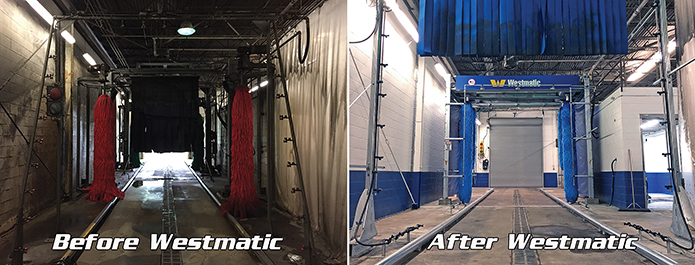
Both styles of wash systems are extremely capable, and a few factors determine which style may be best. Typically wash bay dimensions or space availability determine whether a drive-through system is recommended or a 3-brush gantry system is recommended. For a gantry system, approximately 15 to 20 feet more than the longest vehicle in the fleet is desired. This allows Westmatic’s exclusive overlapping vertical brushes and horizontal brush wash both the fronts and rears effectively. If the space is minimal, or the daily wash count approaches more than 100 per day, a drive through system would be recommended. The drive-through systems are more compact, allowing the same wash features to be installed in a shorter space, and makes replacing older, antiquated systems much easier and opens up space in existing sites.
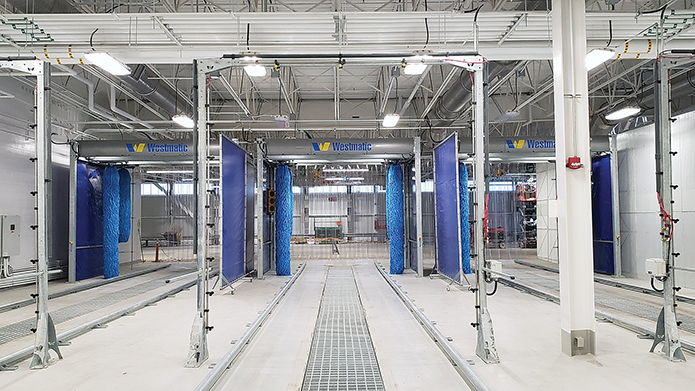
Aside from existing or planned dimensions, optional equipment is another decision transit authorities consider. Implementing water recycling tends to be the first item discussed, however, the incorporation of high-pressure features like undercarriage and wheel wash systems or high-pressure spray in conjunction with the brushes are becoming popular choices. This expands upon the already versatile nature of Westmatic’s systems, and allows completely touchless washing (for odd, shaped vehicles), or brush washing, or a combination of both. Westmatic’s water recycling system captures, filters, treats, and stores the wash water, using it for the brush pass and high-pressure features, reducing the total water usage approximately 85 percent. With large fleets or high wash counts, this is a great return on the investment and further reduces the water consumption and discharge from Westmatic’s already efficient systems. Dryer systems are also a common option discussed, as they not only dry the vehicles as they exit, but also retain the vehicle water carry off within the bay and ultimately the water recycling system.
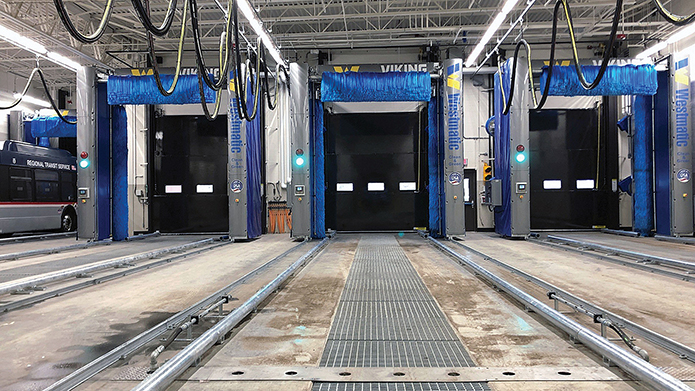
Another aspect of the decision-making process is the incorporation of technology. There are continuous advancements in vehicle technology, and Westmatic believes the wash systems need to adapt alongside these changes. Westmatic embraces and incorporates the latest technology in their wash systems, including soft starting full density brushes, variable frequency drive motors for complete and precise wash control, mirror protection programming, a maintenance-free belt drive system instead of chain drive which requires constant greasing, as well as RFID integration. Westmatic’s systems utilize an LCD touchscreen for easy wash program selection. However, the RFID system bypasses any manual wash program selection and scans the tagged vehicle as it approaches the wash system. It automatically selects the correct wash program sequence for that particular vehicle type and commences the wash sequencing as they enter the wash system. The RFID system also tracks and stores the particular wash count, type, and time, and can even generate wash reports for data tracking capabilities. Westmatic can also integrate door controls in our wash process to open and close the entrance and exit doors as the vehicle progresses through the wash process. Incorporating this technology automates the wash process even more, all the way from start to finish without the driver needing to exit the vehicle at any point. This promotes a safer work environment and more effective wash and maintenance schedule.
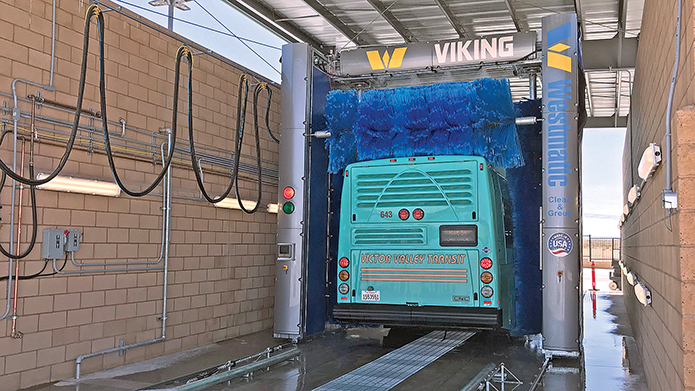
Specifying the right system and options comes down to the goals of the transit authority or knowledge of what works best. Westmatic’s representatives are available to answer questions, discuss project goals, or conduct site visits to examine and review what system and options would be recommended. Westmatic’s Youtube channel (https://www.youtube.com/c/WestmaticCorporation/videos) is also a useful tool as it is constantly updated with some of the latest Westmatic installations and helps visualize certain wash system sequencing. This visual demonstration helps determine the preferred system, demonstrate its operation, and Westmatic’s team can help specify the associated equipment to be integrated into the design plans of a new project. A bland specification for a project can lead to lackluster performance, inferior equipment, or constant problems for the owner. Westmatic is the premier manufacturer of automatic large vehicle wash systems and more often than not, the basis of design for the wash equipment.
Another benefit to Westmatic is our availability for direct purchase. Westmatic systems are available for direct and discounted purchase on state contracts as well as cooperative purchase contracts such as the widely used Sourcewell and NCPA contracts. As it was already competitively bid and awarded to be listed on these contracts, transit authorities and other members have the ability to purchase or piggyback off of these contracts directly, as they contain the FTA clauses within them. This helps avoid the pitfalls of a public bid with contractor markup or product substitution and allows the owner to control their equipment purchase. The typical lifespan of a wash system is upwards of 20 years, so the decision for the owner is important, as they will live with, operate, and maintain this equipment for many years. A direct purchase also allows for Westmatic to be involved in the design and utility requirements of the system earlier on in the process to ensure a smooth project overall.
Over the lifespan, Westmatic’s low maintenance, high efficiency approach, really stands out and separates us from other manufacturers. This is why our equipment is most often purchased directly by the owner or awarded via RFP, eliminating any chances of an inferior system being installed. We have installations for some of the largest, most well-known, and most progressive transit authorities across the country, that truly care about their fleet appearance and impact on the environment. Our water usage is less, our chemical usage is less, and our electricity usage is less. This keeps the operating expenses as low as possible while keeping the environmental impact to a minimum and the vehicles as clean as possible. In either a Westmatic drive through system or gantry system, our overhead wagon design and belt system requires zero maintenance, and we do not use air cylinders or pneumatics to control the brushes. All brushes are controlled electronically, which “feel” around the bus through the wash process and do not require greasing or constant air pressure calibration as other do. Westmatic’s total brush control allows for quicker, more efficient washes, cutting down on total run time, water usage, and soap usage leading to a total lifetime cost far less than any other manufacturer.
Scott Witter is North America sales director for Westmatic. Visit www.westmatic.com for more information.
